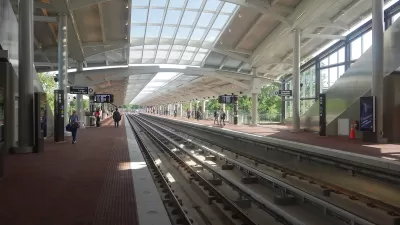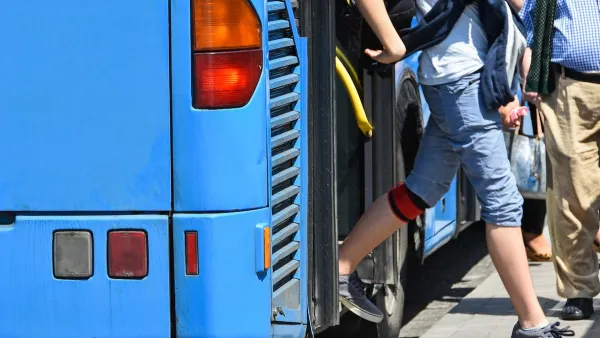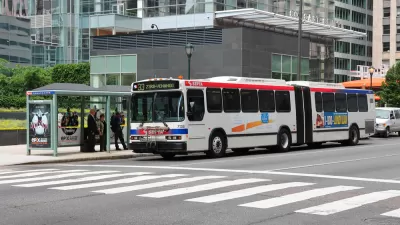Building new stations along existing transit lines can significantly increase access in formerly passed-over neighborhoods.

Despite living near — or, in some cases, directly below — rapid transit lines, some residents of cities like Atlanta and Washington, D.C. still lack access to transit. As Benjamin Schneider explains in Bloomberg CityLab, this is largely because planners of the past purposely skipped certain neighborhoods when planning transit stops or planned transit as just a way to shuttle commuters between suburbs and downtowns. “It’s a pattern that can be seen in the Bay Area, where BART trains skip over much of East Oakland, a low-income area with one of the highest population densities in the region. Activists there have launched a campaign to construct a new station in the San Antonio neighborhood, in the middle of a 2.7-mile stretch of tracks without access to the system.”
On the other side of the country, “Atlanta Mayor Andre Dickens wants to match the city’s infill development with infill train stops. In April, Dickens signed an executive order pledging to build four new MARTA stations on existing stretches of track. The stations, one in each of the city’s four quadrants, will all be on or near the BeltLine.” This transit infill could help expand transit access without building new lines by bringing existing services closer to residents. “At a time when laying new tracks can be prohibitively expensive, they’re an affordable way to make the most of infrastructure that’s already in place.”
FULL STORY: To Expand Transit on the Cheap, Cities Explore Infill Stations

Planetizen Federal Action Tracker
A weekly monitor of how Trump’s orders and actions are impacting planners and planning in America.

Congressman Proposes Bill to Rename DC Metro “Trump Train”
The Make Autorail Great Again Act would withhold federal funding to the system until the Washington Metropolitan Area Transit Authority (WMATA), rebrands as the Washington Metropolitan Authority for Greater Access (WMAGA).

The Simple Legislative Tool Transforming Vacant Downtowns
In California, Michigan and Georgia, an easy win is bringing dollars — and delight — back to city centers.

Demise of Entertainment Industry Mirrors Demise of Housing in LA
Making movies has a lot in common with developing real estate: producers = developers; screenwriters = architects; directors = general contractors. The similarities are more than trivial. Both industries are now hurting in L.A.

How Public Spaces Exclude Teen Girls
Adolescent girls face unique challenges and concerns when navigating public spaces. We can design cities with their needs in mind.

Proposed Ohio Budget Preserves Housing Trust Fund
The Senate-approved budget also creates two new programs aimed at encouraging housing construction.
Urban Design for Planners 1: Software Tools
This six-course series explores essential urban design concepts using open source software and equips planners with the tools they need to participate fully in the urban design process.
Planning for Universal Design
Learn the tools for implementing Universal Design in planning regulations.
Smith Gee Studio
City of Charlotte
City of Camden Redevelopment Agency
City of Astoria
Transportation Research & Education Center (TREC) at Portland State University
US High Speed Rail Association
City of Camden Redevelopment Agency
Municipality of Princeton (NJ)





























